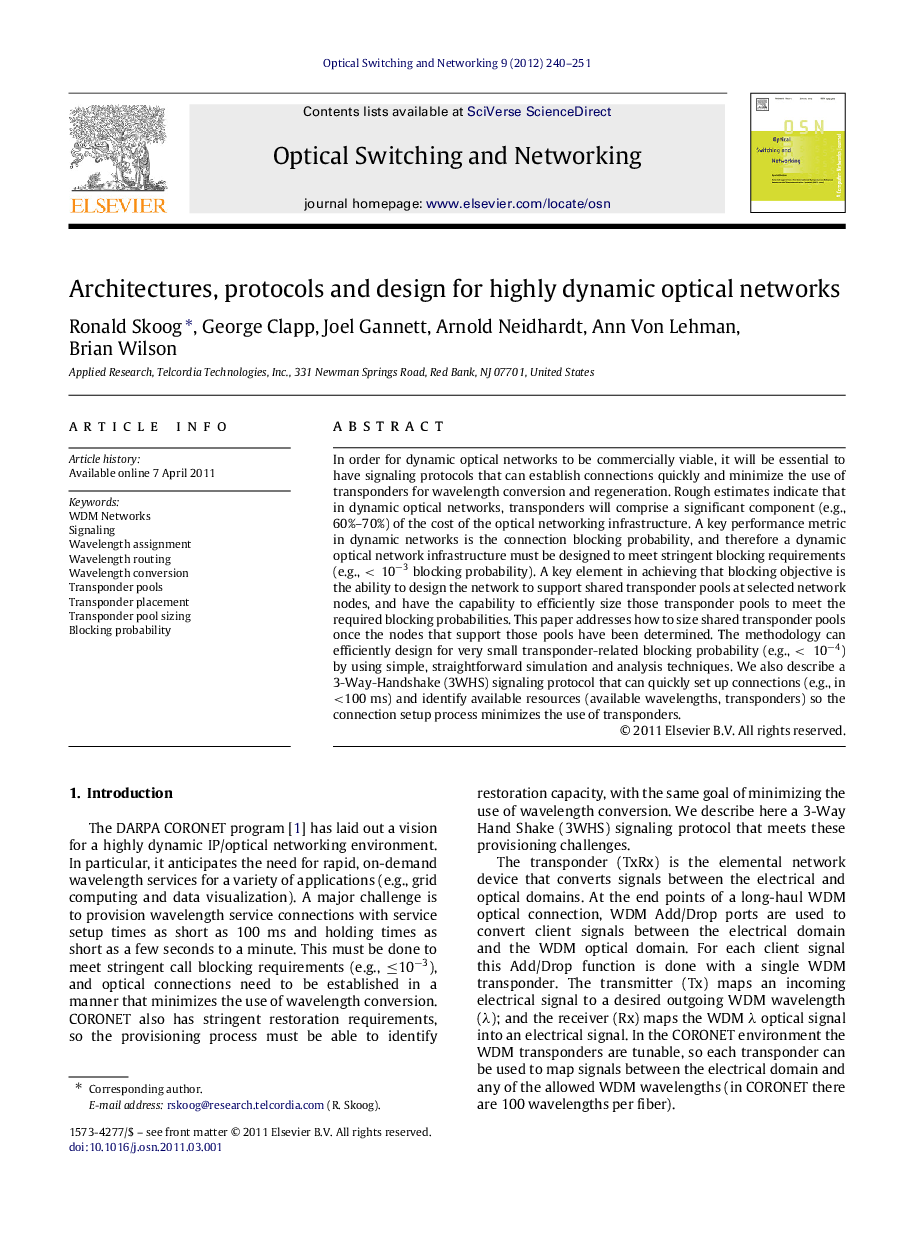| Article ID | Journal | Published Year | Pages | File Type |
|---|---|---|---|---|
| 463618 | Optical Switching and Networking | 2012 | 12 Pages |
In order for dynamic optical networks to be commercially viable, it will be essential to have signaling protocols that can establish connections quickly and minimize the use of transponders for wavelength conversion and regeneration. Rough estimates indicate that in dynamic optical networks, transponders will comprise a significant component (e.g., 60%–70%) of the cost of the optical networking infrastructure. A key performance metric in dynamic networks is the connection blocking probability, and therefore a dynamic optical network infrastructure must be designed to meet stringent blocking requirements (e.g., <10−3 blocking probability). A key element in achieving that blocking objective is the ability to design the network to support shared transponder pools at selected network nodes, and have the capability to efficiently size those transponder pools to meet the required blocking probabilities. This paper addresses how to size shared transponder pools once the nodes that support those pools have been determined. The methodology can efficiently design for very small transponder-related blocking probability (e.g., <10−4) by using simple, straightforward simulation and analysis techniques. We also describe a 3-Way-Handshake (3WHS) signaling protocol that can quickly set up connections (e.g., in <100 ms) and identify available resources (available wavelengths, transponders) so the connection setup process minimizes the use of transponders.
